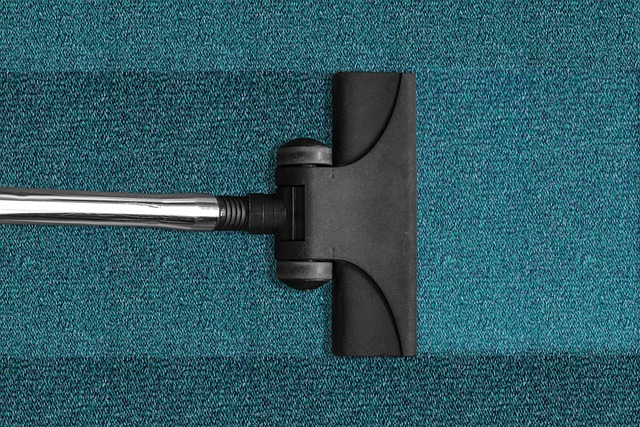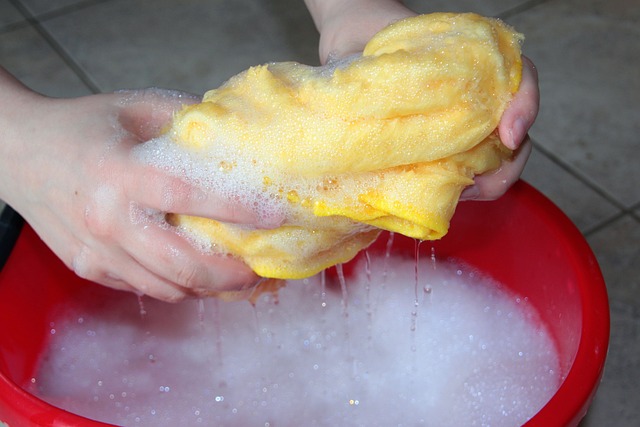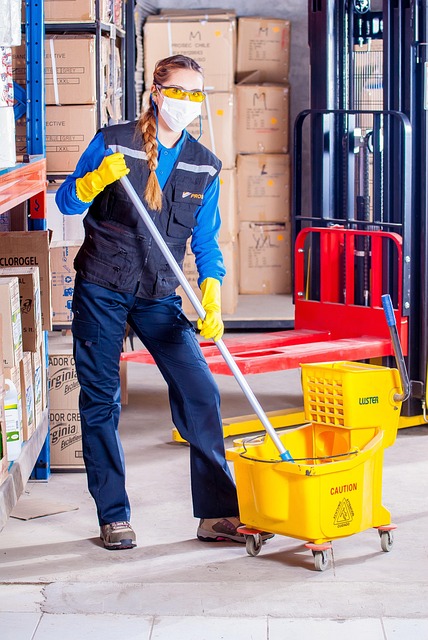Floor sealing is crucial for maintaining flooring types like hardwood and concrete, protecting against moisture, dirt, and stains. The process begins with thorough floor cleaning, repairing scratches, and applying a sealer suited to the material (e.g., water-based, oil-based, or silicone-based). Regular cleaning and sealing extend floor lifespan, offering stain resistance and easy maintenance. Proper preparation, including vacuuming, specialized cleaning solutions, and repair, ensures optimal sealer adhesion. Choosing a reputable floor sealing company with comprehensive services and suitable sealing options is key to achieving lasting protection and aesthetic enhancement for various flooring types.
Looking to transform your floors? Discover the power of professional floor sealing services—a game-changer for any space. From understanding the basics and choosing the right sealer to preparation tips and post-sealing care, this guide covers it all. Learn how floor sealing addresses common issues like scratches, stains, and moisture damage, enhancing durability and aesthetics. Explore real-life transformations and find expert advice on selecting a reliable company for your ideal floor finish.
Understanding Floor Sealing: The Basics

Floor sealing is a process that involves applying a protective coat to your floors, enhancing their durability and beauty. It’s an essential service for maintaining and preserving various flooring types, from hardwood to concrete. The basic concept behind floor sealing is to create a barrier between the floor’s surface and potential damage-causing elements like moisture, dirt, and stains.
This process typically includes cleaning the floor thoroughly, repairing any scratches or imperfections, and then applying a sealer specifically designed for the particular flooring material. Regular floor cleaning and sealing play a crucial role in extending the lifespan of your floors, ensuring they remain in top condition for years to come.
Types of Floor Sealers and Their Benefits

Floor sealing is a crucial step in maintaining and enhancing your flooring’s beauty and durability. There are various types of floor sealers available, each offering unique benefits tailored to different flooring materials and needs. These include water-based sealers, which are eco-friendly and quick-drying, ideal for wooden floors as they protect against moisture without obscuring the natural grain. On the other hand, oil-based sealers penetrate deep into the floor, providing superior protection for high-traffic areas, but may take longer to dry. Silicone-based sealers are known for their durability and resistance to UV damage, making them perfect for exteriors or areas with significant sunlight exposure.
Each sealer type provides specific advantages in terms of stain resistance, ease of cleaning (which is particularly important for floor cleaning routines), and longevity. Choosing the right sealer ensures your floors remain in pristine condition, allowing you to enjoy their aesthetic appeal for years to come while also protecting against everyday wear and tear.
Preparation for Floor Sealing Services

Before floor sealing services can begin, proper preparation is key for achieving optimal results. The first step involves thorough floor cleaning to remove any dirt, dust, or debris that might hinder the sealing process. This includes sweeping, vacuuming, and using specialized cleaning solutions tailored for the type of flooring. A clean surface ensures the sealer adheres evenly and effectively.
Additionally, repairing any damages like cracks, gaps, or water-damaged areas is essential. These issues can compromise the integrity of the seal, leading to future problems. Filling and sanding these defects prepares the floor, ensuring a smooth and even surface for application of the sealing coat. This meticulous preparation guarantees that the final seal not only enhances the aesthetics but also protects the floor for years to come.
The Floor Cleaning Process: Step-by-Step Guide

The floor cleaning process involves several meticulous steps to ensure a thorough and effective clean. It begins with vacuuming or sweeping to remove loose dirt, debris, and dust from the surface. This initial step is crucial as it prepares the floor for deeper cleaning, preventing scratches or damage. Next, a suitable floor cleaner is selected based on the floor’s material, be it wood, tile, or vinyl. Professional cleaners often use specialized equipment like floor scrubbers or steam cleaners to apply the solution effectively.
After the cleaner is applied, agitation is used to loosen and dislodge stubborn stains and grime. This can involve brushing or rotating brushes for more intense cleaning. Once the floor is thoroughly cleaned, a rinse is performed to remove any residual cleaner. Finally, drying techniques like mopping or air drying are employed to leave the floor spotless and free from moisture. These steps ensure that floors not only look clean but also remain in good condition over time.
Choosing the Right Floor Sealing Company

When it comes to selecting a floor sealing company, it’s essential to make an informed decision to ensure top-notch results. Look for professionals who offer a comprehensive range of services, including floor cleaning and preparation, as this is the foundation for effective sealing. Reputable companies should provide various sealing options tailored to different flooring types, ensuring long-lasting protection.
Check their experience and expertise, especially in dealing with your specific flooring material. You can request references or read customer reviews to gauge their reputation and the quality of their work. A good floor sealing company will also offer guidance on maintenance and aftercare, ensuring your floors stay in pristine condition for years to come.
Common Floor Issues and How Sealing Can Help

Floors, despite their durability, are susceptible to various issues that can impact their aesthetics and longevity. Common problems include scratches, stains, and chips, often caused by regular foot traffic, harsh chemicals, or even just everyday wear and tear. Floor sealing is a powerful solution to tackle these issues head-on.
By applying a protective layer, floor sealing creates a barrier that prevents damage from taking hold. It fills in existing scratches and cracks, providing a smooth surface that’s easy to clean. This not only enhances the visual appeal of your floors but also extends their lifespan, as it acts as a shield against stains, liquid spills, and dirt, making regular floor cleaning much more efficient and effective.
Maintenance Tips After Floor Sealing

After floor sealing, proper maintenance is key to preserving the longevity and appearance of your sealed floors. Regular cleaning plays a significant role in this process. Utilise a suitable floor cleaning solution recommended by the sealant manufacturer to avoid damaging the seal. Avoid harsh chemicals or abrasive cleaners that can erode the sealer over time.
In between deep cleans, keep your sealed floors free from dirt and debris by sweeping or vacuuming regularly. This simple step prevents grit from settling into the sealant, which could lead to scratches and premature wear. Remember, with proper care, your sealed floors will not only enhance the aesthetic appeal of your space but also provide a durable and protective layer for years to come.
Real-Life Success Stories: Floor Sealing Transformations

Floor sealing services have left their mark on countless spaces, transforming ordinary floors into stunning, durable surfaces. From bustling restaurants to vibrant homes, real-life success stories showcase the incredible impact of professional floor cleaning and sealing. Imagine a busy café with hardwood floors that see constant foot traffic; a skilled team applies a protective seal, enhancing the natural beauty of the wood and ensuring it remains scratch-free and easy to maintain for years to come.
In a residential setting, a family’s old, tired tile flooring is brought back to life. The sealing process fills in gaps, provides water resistance, and adds a glossy finish, creating an entirely new look and feel without breaking the bank. These transformations not only improve aesthetics but also increase the floor’s longevity, making them a popular choice for homeowners seeking both style and functionality.
